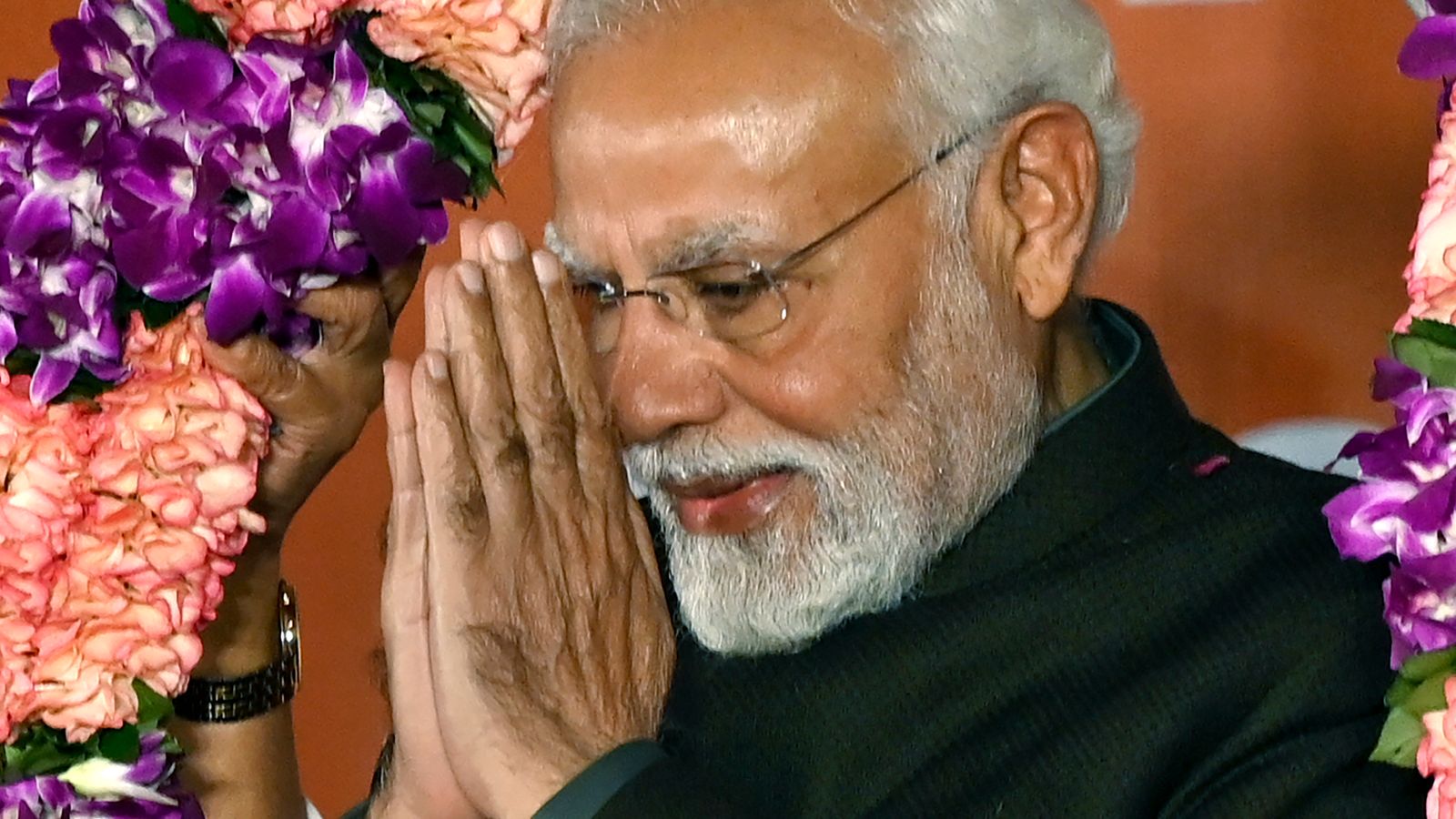Indian Prime Minister Narendra Modi and the Bharatiya Janata Party (BJP) have swept the recently held state elections in Madhya Pradesh, Rajasthan and Chhattisgarh.
Of the four big states that went to the polls, the party wrested Rajasthan and Chhattisgarh from the Congress party while retaining Madhya Pradesh with an overwhelming majority.
The Congress party under the leadership of the Gandhis won the southern state of Telangana – a consolation as the party has no major state government in the north except for Himachal Pradesh.
These elections are significant as they are perceived as a precursor to the general election early next year.
Barring the south and eastern part of the country, the BJP are now the dominant power across India – ruling 12 of the 28 states.
Mr Modi has been the face of the party throughout the campaigns – traversing the country championing development.
His appeal to the Hindu majority has also been a key attraction for voters.
But it has been the promise of well-targeted welfare schemes – with a more efficient delivery system to the last person in the chain – that has appealed to all.
And in particular, women voters, who form the large electoral catchment who are ardent supporters of Mr Modi.
Conventionally, people vote differently in state elections for regional-specific concerns while federal elections are fought over national issues.
But Mr Modi has turned that custom on its head.
Even in the presence or absence of state leaders, he’s the main campaigner with his face on posters, advertising hoardings and handouts.
The tagline this time being a “Modi guarantee” and a “double engine” governance at the state and federal level.
Click to subscribe to the Sky News Daily wherever you get your podcasts
Populist schemes have become a vital promise for political parties.
During his campaign, Mr Modi announced a scheme of providing 5kg of free grain a month (originally a COVID-era scheme) to 800 million people – about 53% of the country’s population for the next five years.
Various other programmes targeting women voters have been thrown into the mix.
These may help to win elections but will eventually become a burden on the state exchequer in the long run.
For a healthy democracy, opposition is a necessity. That element of a pan-India party is desperately missing.
The Congress under the leadership of the Gandhis has failed to provide a credible challenge to the Modi juggernaut.
Read more:
Indian official ‘directed plot to kill Sikh in New York’
All workers rescued from tunnel after being trapped for two weeks
Be the first to get Breaking News
Install the Sky News app for free
Opposition largely comes from state satraps who are mainly confined to their geographical limits.
Earlier this year an attempt was made by 28 opposition parties to come together as an alliance to take on the fight against Mr Modi, but internal rivalries prevented cooperation.
If the status quo stays in place the result of the 2024 general elections is a foregone conclusion and Mr Modi is all set for his third term.
He is undoubtedly India’s most popular politician – manifesting strong leadership with Hindu nationalism, a mix of asceticism, a public display of Hindutva, and a strong authority that can deliver welfare and development to a rising and aspiring nation.







